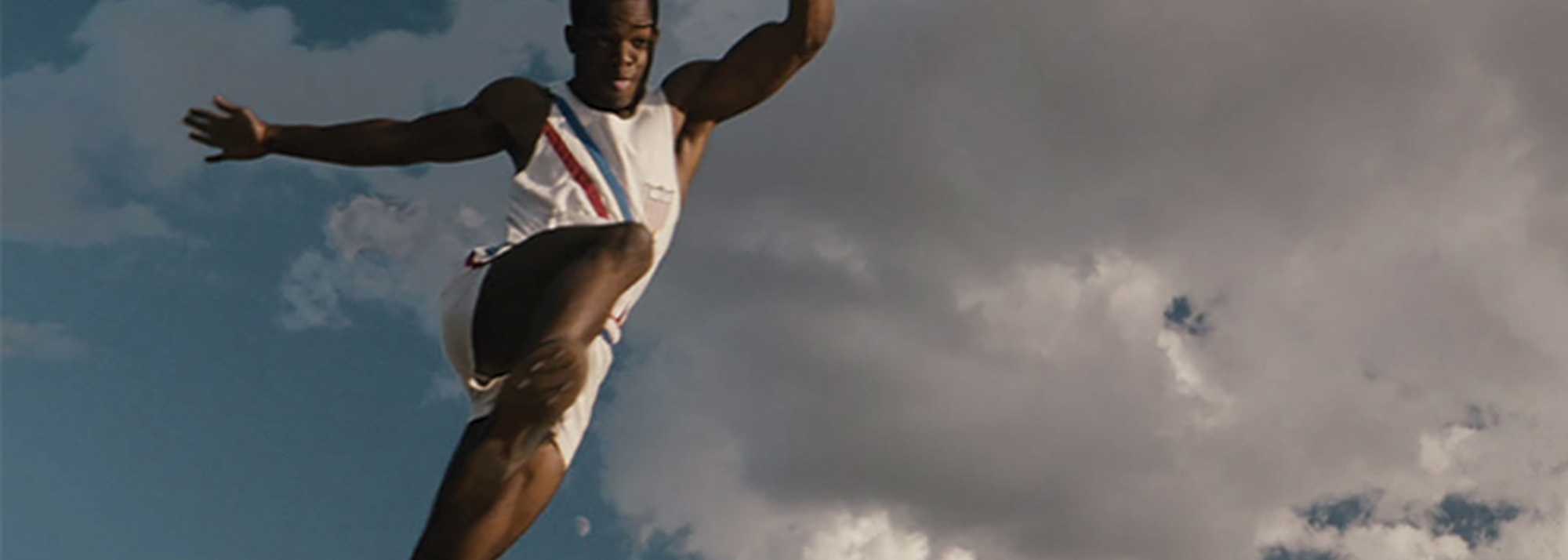Stephan James stars as Jesse Owens in Stephen Hopkins' RACE (© Focus Features)
As RACE, the movie charting the remarkable story of Jesse Owens, gears up for its European premier tonight (11 March), we find out what made the pioneering athlete so special on the track.
Capturing the spirit of Jesse Owens on film would never be easy. Stephan James, the actor given the weighty task, has talked candidly about the challenge of portraying not only Owens’ character, but also his unique athleticism.
“Not only did I have to learn how to run fast, but I had to learn to run like Jesse,” he explained in an interview with AP. “His style was so particular ... his start, his mechanics, his stride, how his face looked. There are people the world over who are Jesse enthusiasts. You can't fake that.”
When Mike met Jess... eh... Stephan
Stephan is right to understand the importance of Owens’ legacy on the sport of track and field. American athlete Jenna Prandini, 4x100m silver medallist from Beijing last year, like Owens competes across the sprints and the jumps. She has won NCAA medals in events ranging from the 60m, 100m, 200m to the long jump. The 23-year-old says Owens’ legacy had an influence on her growing up.
“My dad is a huge track fan. He would throw up names and I had no idea who they were. He had a book and showed me the things Jesse Owens did. I remember being like ‘that’s insane’,” Prandini recalls.
“He [Owens] was one of the few people my dad regularly talked about and said ‘this is who you could be like, if you carry on’. He was definitely a big inspiration and the biggest there was in this sport.”
Owens’ long jump world record of 8.13m set in 1935 stood for 25 years. It would have won him bronze at the London 2012 Olympics – remarkable given the huge advances in sports science that have taken place.
Altis jumps and combined events coach Dan Pfaff is known as one of the world’s best. He’s coached the likes of 1996 Olympic 100m champ Donovan Bailey, two-time i60m world champion Bruny Surin and Greg Rutherford, the European, Commonwealth, World and Olympic champion. We asked Pfaff to explain just how Owens’ was so successful.
“He was a rhythm genius with movements,” explains the expert. “Owens was a versatile athlete who did multiple events, often within the same competition and did it for a long period of time for that age and era. I think the rhythm dynamics he developed in the hurdles, long jump and various sprint distances laid a foundation for his running economies.
“The long hurdle races of that era [Owens held the world record for the 220 yards hurdles] were different than today’s distances, and they affected metabolic factors in his training and race model. Because he did multiple events with a huge competitive schedule, I believe his training program design separated him from his rivals in terms of preparation.”
Unlike the long jump, Owens’ 100m records wouldn’t even gain him a place in a world championships these days, let alone win any medals. But of course external factors such as surfaces, shoes, training evolutions, travel ease and competition schedules have all played a part in advancing the sport since the Owens era.
Pfaff continues: “The kinematics of his running gait show solid foundational principals in his racing and jumping. He was a bit rigid in elbow and knee angulation factors compared to today’s sprinters, but his lower leg mechanics, strike point on the track, and general kinematics compare well to today’s schemas.
“While strong and powerful for the times his real gifting in my eyes was the use of elastic energy return during ground contacts. The ratios of his contact times [feet on the ground] and flight times [feet off the ground] was very consistent in the race model logistics. Owens’ sense of uniform acceleration was unparalleled in that era. I think the hurdling and long jumping built and reinforced this concept over his career.”
In fact, Pfaff is certain that if Owens were a 21st century athlete he would be up there with the best: “If you do projections off the variables [mentioned above], Owens would most likely be world class yet today.
“As mentioned previously, Owens did multiple events often. He competed often. These are huge factors in technique development. Keep in mind that in that area the approach surfaces were dirt and became very damaged as the competition progressed. They used much shorter approach step numbers in those days also.
“So on a great surface with a longer run, perhaps he would still be a dominant player in the event.”
Main image: Stephan James stars as Jesse Owens in Stephen Hopkins' RACE. Credit: Focus Features




